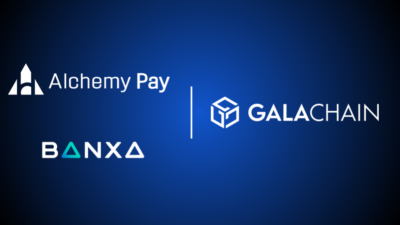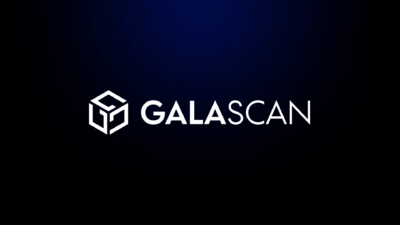What is Scalability?
Scalability is the ability of a system, network or process to handle a growing amount of work or its potential to be enlarged to accommodate that growth. For traditional businesses, scalability refers to how well a company can increase production or services to meet demand without sacrificing performance or losing control over operations.
Think of it like expanding a coffee shop: As demand grows, you might open new locations or hire more staff to meet the needs of more customers.
In the web3 world, scalability refers to how well a decentralized network can grow to support more users, applications and transactions without compromising on speed, security or efficiency. Unlike traditional networks, decentralized networks like those built on blockchain technology operate across numerous independent nodes rather than a centralized server. This difference introduces unique challenges and opportunities for scalability.
LEARN MORE:
“What is Scalability?” – Techopedia, updated September 2024
Why Scalability is Vital in Web3
In the web3 era, scalability isn’t just a nice-to-have feature—it’s a necessity. As decentralized networks grow, so does the demand for faster transactions, better user experiences and increased security. If a blockchain cannot scale effectively, it risks becoming slow, expensive or unreliable. This can deter users, developers and businesses from adopting the technology.
For example, early blockchain networks like Bitcoin and Ethereum struggled with scalability due to the growing number of transactions they had to process. Each transaction had to be verified by multiple nodes, causing network congestion, delays and high fees. This scalability problem led to the development of newer blockchains designed to handle more transactions per second (TPS) while maintaining decentralization and security.
In web3, scalability challenges are compounded by the decentralized nature of the networks. Since no single entity controls the system, solutions must be implemented across a wide range of participants, which adds complexity. The faster these networks can scale, the more seamless and effective decentralized applications (dApps), games and platforms can become.
LEARN MORE:
“The Bitcoin Scalability Problem” – Wikipedia
Traditional Growth vs. Decentralized Scaling
Let’s compare scalability in the traditional business world with decentralized networks. In a successful traditional business, scaling might require hiring more staff, improving internal processes or automating certain tasks. For example, a rapidly growing startup might hire hundreds of new employees within a year to keep up with its success. As it scales, it will also face growing pains, such as managing a larger team, more complex operations and the need for more structured procedures.
In decentralized networks, this process can look very different. A decentralized project can achieve massive scale quickly with fewer resources because it’s not limited by centralized control. The network grows by adding more nodes and users who contribute to its security and processing power. However, this rapid growth presents its own challenges, such as maintaining consensus across a larger number of nodes, preventing congestion and ensuring the network’s security.
Blockchain projects must solve scalability issues sooner than later because, unlike most traditional centralized businesses, decentralized networks can easily grow at an exponential pace. The more participants and transactions on the network, the higher the demand for computing power, storage and bandwidth.
The Future of Scalability in Web3
In the blockchain space, it’s common to hear about the “blockchain trilemma,” which refers to the challenges of balancing decentralization, security, and scalability. Typically, improving one of these elements has come at the cost of another. For example, a highly decentralized network may struggle with scalability because each transaction requires verification from many nodes.
LEARN MORE:
“What is the Blockchain Trilemma?” – Coinbase
However, blockchain technology is rapidly evolving, and new solutions are emerging that aim to address this issue. Layer 2 solutions, sharding, and new consensus algorithms like Proof of Stake (PoS) are designed to enhance scalability without compromising security or decentralization.
GalaChain and Scalability in Web3 Entertainment
A great example of an innovative approach to scalability in web3 is GalaChain, the custom-built blockchain by Gala. GalaChain was designed to support high transaction volumes and complex interactions, particularly for the entertainment industry, which includes gaming, music and film. The gaming industry in particular places enormous demands on blockchain scalability because of the sheer volume of interactions required by millions of users engaging in actions like in-game purchases and character customizations. Gamers have notoriously high standards for their tech.
By focusing on scalability from the start, GalaChain ensures that its network can handle the growing demands of the entertainment industry. GalaChain is built to accommodate future growth, which means the more people who use it, the better it becomes at handling large-scale operations. This “bigger it gets, the bigger it can get” concept reflects the idea that scalability is not just about managing current demand but preparing for exponential growth.
Learn more about building on GalaChain
Why Scalability is Critical for the Future of Blockchain
The web3 era moves incredibly fast, and one of the biggest risks for blockchain developers is falling behind on scalability. During development phases, the technology can leap forward, leaving slower-moving projects struggling to catch up. This is why it’s essential for blockchain platforms to not only solve current scalability issues but to anticipate future demands.
For example, as blockchain adoption spreads across industries like finance, healthcare and supply chains, the number of transactions and interactions on these networks will skyrocket. Developers need to build systems that can handle this explosion in activity. Without proper scalability, blockchain projects risk becoming obsolete or too costly for widespread use.
In the web3 world, scalability is everything. It’s the key to unlocking mass adoption and enabling decentralized applications to compete with traditional technologies. As decentralized networks like GalaChain continue to grow, scalability ensures that they can meet the demands of tomorrow, not just today. Whether it’s handling millions of game transactions or enabling the next generation of decentralized finance (DeFi) applications, scalability will determine which platforms thrive in the future of web3.





